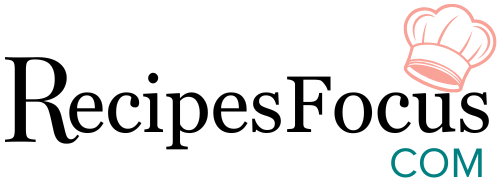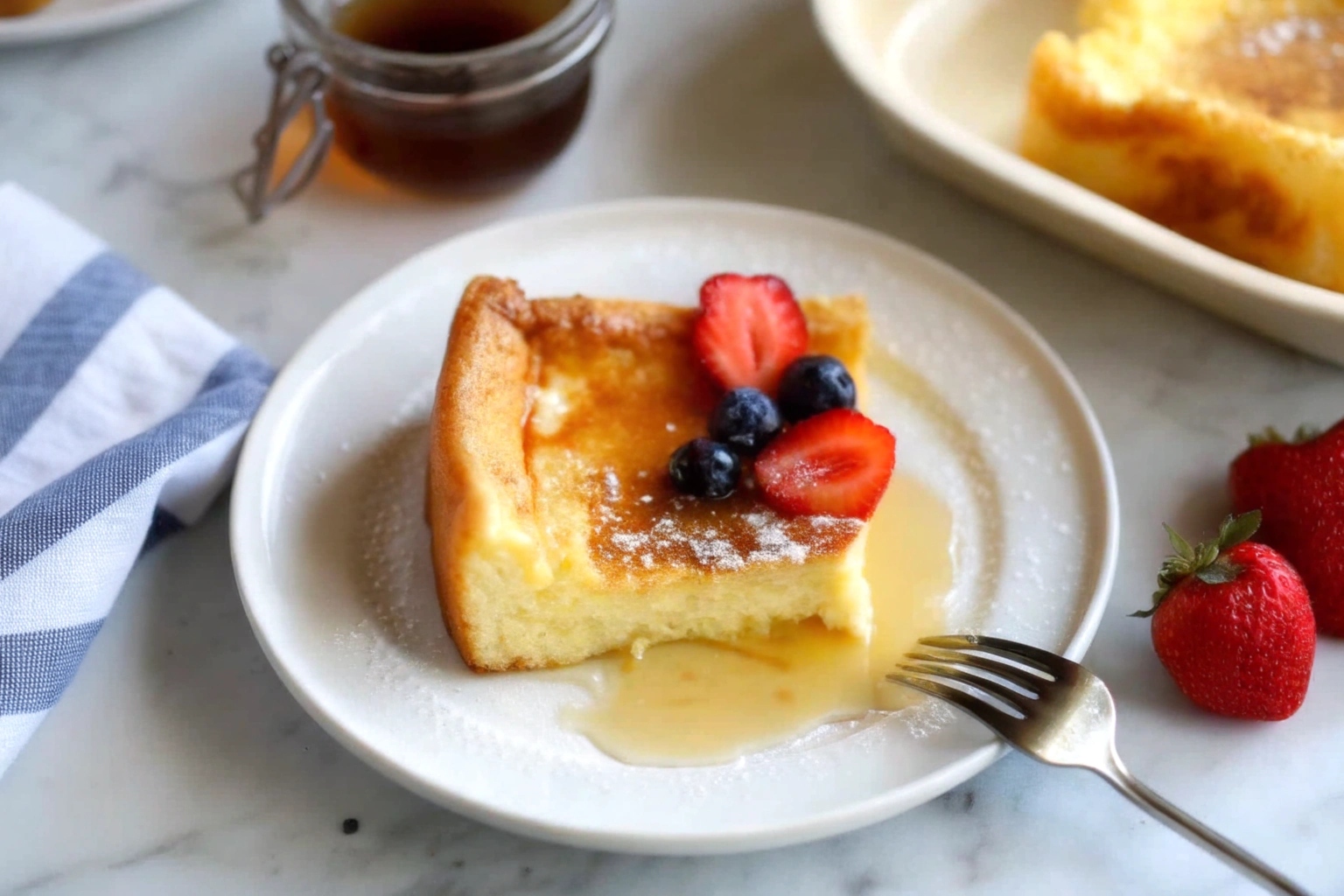German pancakes, also known as Dutch Babies, are a delightful breakfast staple that has captured the hearts (and stomachs) of families worldwide. These oven-baked pancakes rise dramatically, creating puffy, golden edges and a soft, fluffy center. Unlike regular pancakes, German pancakes are made from a simple batter poured into a preheated skillet or baking dish. The result is a deliciously versatile dish that pairs beautifully with powdered sugar, fresh berries, or a drizzle of maple syrup. In this guide, we’ll explore the unique characteristics of German pancakes, how to achieve the ideal rise, and essential tips for perfecting this classic breakfast.
Unique Characteristics of German Pancakes
German pancakes stand out due to their dramatic rise and light, airy texture. Unlike traditional American pancakes, which are cooked on a griddle, German pancakes are baked in the oven. The high heat causes the batter to puff up like a fluffy cloud, creating crispy edges and a custard-like center. This unique cooking method also allows the pancakes to absorb toppings more effectively, making every bite a burst of flavor.
Another defining feature is their minimal ingredient list. Made with all-purpose flour, eggs, milk, and a pinch of salt, German pancakes rely on the simple combination of these ingredients to create their magic. They’re also known for their versatility, easily adapting to both sweet and savory toppings. Whether dusted with confectioner’s sugar, topped with caramelized bananas, or paired with fresh strawberries, German pancakes never fail to impress.
Differences Between German Pancakes and Other Similar Dishes
While they may resemble crepes or regular pancakes, German pancakes have distinct differences:
- Cooking Method: Unlike stovetop pancakes or skillet-fried crepes, German pancakes are baked in a preheated oven-safe skillet or a 9×13-inch baking dish.
- Texture: The dramatic puffiness of German pancakes sets them apart. They’re thicker than crepes but lighter and airier than regular pancakes.
- Ingredients: German pancakes use more eggs relative to flour, giving them a custard-like consistency.
- Rise: Thanks to the high heat and the absence of baking powder, their rise is more like a soufflé.
Dutch Baby pancakes are often confused with German pancakes, but they’re essentially the same dish. The term “Dutch Baby” originated in America and is a playful misinterpretation of the word “Deutsch” (German).
Essential Ingredients for the Perfect German Pancake
To create the perfect German pancake, you’ll need:
- 1 cup all-purpose flour: The foundation for the batter. For a gluten-free version, substitute with a mix of rice, potato, and tapioca flours.
- 1 cup milk: Whole milk is ideal for richness, but almond milk or oat milk works for a dairy-free option.
- 6 large eggs: Responsible for the pancake’s rise and fluffy texture.
- Pinch of salt: Enhances flavor.
- 2 tablespoons granulated sugar: Adds a touch of sweetness.
- 1 teaspoon vanilla extract: Optional but recommended for a hint of warmth.
- 2 tablespoons unsalted butter: Melted in the skillet or baking dish to prevent sticking and add flavor.
Step-by-Step Instructions for Making German Pancakes
- Preheat the Oven: Preheat your oven to 425°F (220°C) and place a 9×13-inch baking dish or cast iron skillet inside to heat.
- Prepare the Batter: In a medium-sized bowl, whisk together 1 cup all-purpose flour, 1 cup milk, 6 large eggs, a pinch of salt, 2 tablespoons granulated sugar, and 1 teaspoon vanilla extract. For an ultra-smooth batter, use a blender or immersion blender.
- Melt the Butter: Once the oven is preheated, carefully remove the dish or skillet and add 2 tablespoons unsalted butter. Let it melt completely and swirl it around to coat the entire surface.
- Pour the Batter: Pour the prepared batter into the hot dish or skillet. The heat will help the pancake rise dramatically.
- Bake: Bake for 20-25 minutes, or until the pancake is puffed and golden brown with crispy edges.
- Serve Immediately: Remove from the oven and serve hot with your choice of toppings.
Achieving the Ideal Rise and Fluffiness
The hallmark of a German pancake is its dramatic puffiness. Here’s how to achieve the perfect rise:
- Preheat Thoroughly: Ensure your oven and skillet are fully preheated before adding the batter.
- Use Room Temperature Ingredients: Eggs and milk at room temperature create a smoother batter that rises better.
- Avoid Overmixing: Mix the batter until just combined to prevent deflating the air.
- Serve Immediately: The pancake will deflate as it cools, so enjoy it fresh from the oven.
Popular Toppings for German Pancakes
1. Syrup: Maple syrup is a classic choice, but homemade buttermilk syrup adds an indulgent touch.
2. Fresh Berries: Strawberries, blueberries, raspberries, or a berry sauce bring vibrant flavors and a hint of tartness.
3. Powdered Sugar: A dusting of confectioner’s sugar enhances sweetness and creates a picture-perfect presentation.
Tips for Substitutions and Variations
- Gluten-Free Options: Substitute all-purpose flour with a gluten-free blend of rice, potato, and tapioca flours.
- Dairy-Free: Replace milk with almond or oat milk and butter with coconut oil or a non-dairy alternative.
- Savory Version: Skip the sugar and vanilla, then top with sautéed vegetables, cheese, or smoked salmon.
How to Properly Store Leftovers
Store leftover German pancakes in an airtight container in the refrigerator for up to 3 days. To reheat, place the pancake in a preheated oven at 350°F (175°C) for 5-7 minutes, or until warmed through. Avoid microwaving, as it can make the texture soggy.
FAQ Section
Can I prepare the batter in advance? Yes, you can prepare the batter and store it in the refrigerator for up to 24 hours. Give it a quick whisk before baking.
What can I use instead of a cast-iron skillet? A 9×13-inch glass or metal baking dish works perfectly.
How do I adjust the recipe for more servings? Double the ingredients and use two baking dishes for larger batches.
Additional Pancake Recipes to Try
- Blueberry Pancakes: A fruity twist on a breakfast classic.
- Ricotta Pancakes: Perfect for a creamy, fluffy texture.
- Buttermilk Pancakes: The ultimate American pancake recipe.
Conclusion and Final Thoughts
German pancakes are a show-stopping addition to any breakfast table. Their light, fluffy texture and versatile flavor pairings make them a family favorite. Whether you’re dusting them with powdered sugar, topping them with fresh fruit, or serving them with homemade syrup, these puffy pancakes are guaranteed to delight. Try this recipe for your next breakfast or brunch, and experience the magic of this timeless dish.
Related Recipes:
- Sourdough Bagel Recipe
Explore the art of making sourdough bagels for a savory contrast to your marzipan cookies. - English Muffin Recipe
Perfect for breakfast or as a base for your favorite toppings, these muffins add variety to your baking repertoire. - Cottage Cheese Recipes
Discover the versatility of cottage cheese in both sweet and savory dishes.

